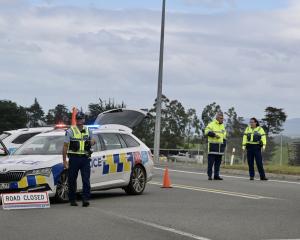The Otago Museum has admitted counting errors previously inflated annual visitor numbers in 2013-14 by 65%.
The museum has blamed a software problem for significantly overestimating its much-touted attendance figures.
Visitor numbers in the 2013-14 financial year were originally reported at 509,000, its latest annual report said. But a revised counting system showed the new estimate for that period was actually 307,502, a difference of 201,498.
The museum mainly uses cameras and a software system to count its visitors. Head counts are also conducted to recalibrate the system.
Previously, the award-winning museum has said it attracted 600,000 visitors in 2009.
The Dunedin City Council, the museum's key funder, froze its financial contribution at the same level for a period because of doubts over the accuracy of the numbers.
Otago Museum Trust Board chairman Graham Combie, who has been on the board since late 2010, was asked by the ODT if he had had any earlier misgivings about the museum's attendance figures.
Mr Crombie, who is a Dunedin City Council appointee on the board, was also asked if anyone at the DCC had earlier approached him with concerns about the museum figures.
He said when he became chairman early in 2011 he had been focused on other things, including building relationships and financial matters, and had not been approached over the issue.
Asked about the discrepancy in attendance numbers, he said the museum had begun using a ''new system'' to assess visitor attendance, which provided a ''different measure'' of attendance. Such figures were always an estimate.
He said people should not assume that other previously published museum attendance levels were wrong.
''That would be a very dangerous assumption,'' Mr Crombie said.
Previous museum attendance figures had been subject to external audit.
Museum director Dr Ian Griffin said counting visitors was an art as well as a science, and annual attendance numbers remained an estimate. He did not wish to comment on what had happened before he became museum director in 2013.
People should be ''quite careful'' about saying previous attendance figures had been inflated, he said.
''I wasn't there at the time and I don't know how it was counted.
''I'm certainly not being critical of how things were done previously.''
The museum had hoped to attract more than 400,000 visitors in the 12 months to June 30 this year.
But, using the revised system, it counted 303,000 visitors.
A review found the original numbers had been ''inflated due to the algorithms used in the counting software and adjustments made based on estimates'', the report said.
From March 12 last year, the software had been ''reviewed and updated and the number of people counted is more accurate''.
Dr Griffin said the museum continued to perform strongly and transparently, and he wanted the visitor entry estimates to be conservative.
Asked if questions could now be asked about various business performance awards the museum had won, Dr Griffin said they had been well deserved and properly won.
He cautioned against people making assumptions about how many people may actually have visited the museum in earlier years.
He said the museum would not recalculate figures done before the 2013-14 year.
Dunedin City Council chief executive Dr Sue Bidrose told the Otago Daily Times she had been aware revised figures were coming, after an earlier pledge by Dr Griffin to deliver ''robust'' numbers.
The council provided about $4.1million a year to the museum, which, together with about $500,000 from other councils, represented about half the institution's annual funding.
However, visitor numbers and funding levels were not linked, and there was no way the council's contribution would reduce, Dr Bidrose said.
The council was required by law to maintain existing funding levels, although it had the power to freeze financial support at existing levels, she said.
That had happened in the past, for about four years, until Dr Griffin's move to study the visitor numbers.
''That was because we didn't feel we were getting accurate information out of [the museum].
''The point at which Dr Griffin said he was committed to providing us accurate information ... we reviewed their annual incremental funding increase.''
She could not say whether the revised visitor numbers would have any impact on future funding increases, which were considered annually by the council.
Councillors would have the chance to quiz Dr Griffin about the figures, and funding requests, during next year's annual plan process, she said.
''I couldn't speak for councillors.
''The thing that we've always advised in the past is if we don't trust the data the museum gives us, that is a problem.
''We've worked hard with [Dr Griffin] to make sure the information is trustworthy,'' Dr Bidrose said.
''We're now confident that it is.''
Numbers cut
2013-14 attendance: 509,000
Revised attendance: 307,502












